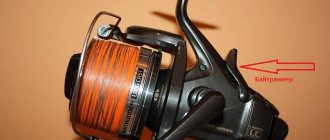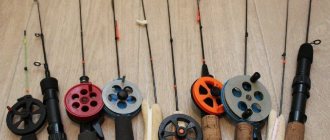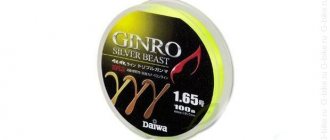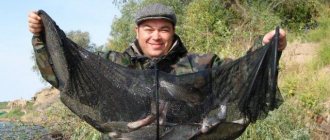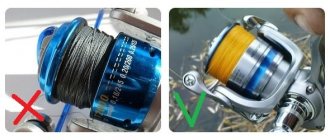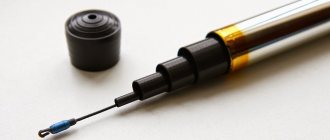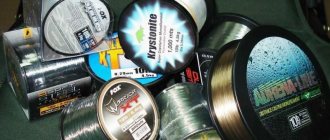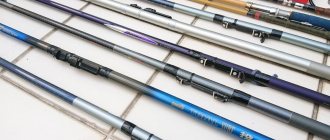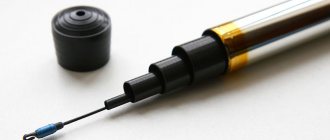Success in fishing largely depends on the equipment and correctly selected bait and bait. Knowing certain tricks and subtleties, a fisherman will be able to catch a large number of a wide variety of fish of various sizes. One of the important processes is choosing a reel for a float rod. It would seem, what could be simpler? But specialized stores offer a wide range of products, the sight of which simply makes your eyes wide open. Incorrectly selected design elements can lead to disappointment and leave unpleasant memories of your fishing experience.
Types of coils
Fishing reels today are classified into three main areas. Mechanisms, based on the principle of their operation and structure, are divided into inertial, inertial-free and multiplier types. The functions of each type are identical, the only differences are in the operating characteristics of the product, as well as in the technique and techniques for performing certain operations by the fisherman.
Simple inertial coil
The simplest in design and operating principle are inertial models. The operating principle of this type of accessory is based on the inertia of the mechanism’s drum spinning up from the force of casting the bait. In addition to the drum for storing fishing line, the mechanism of the product is equipped with a brake stopper, which serves as a dead stop for the unwinding mechanism. This function is not involved in the fishing process and serves only for the convenience of moving and storing gear.
Important! The braking of the inertial reel drum during the fishing process is carried out by the fisherman by pressing the rotating part of the mechanism with his finger.
Working with inertia requires a certain skill and preliminary training in casting bait and braking the drum.
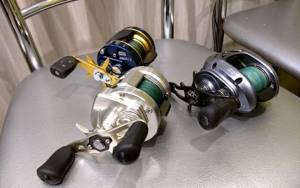
Multiplier models
The multiplier reel for fishing, the prototype of which was the inertia reel, is gradually replacing the classic type of mechanism. After all, its device, although it has become more complex, has simplified the process of feeding bait and regulating the course of the fishing line using a friction clutch. In multis, there are no problems with tangling the cord or so-called beards, and you can learn how to work with this product in a couple of test throws.
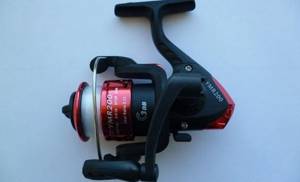
Inertia-free inexpensive reel
The inertia-free system has become one of the fundamental elements of any equipment. Innovative solutions on the principle of dropping the line from the spool and the use of toothed gears to increase the gear ratio when winding up the lines have made the accessory an indispensable part of the spinning, feeder, match and Bolognese fishing directions. A finely tuned friction brake and a baitrunner function for preserving gear from loss add advantages to this type of reel and comfort for the angler in catching a trophy.
Choosing a reel for different types of fishing
Reels for fishing rods must be purchased taking into account the fishing techniques that will be used for fishing. This is a very important condition on which the catch depends. How should you select a model for a specific technique?
Bolognese fishing (in wiring)
Bolognese fishing involves the use of float rods on canals, ponds, and rivers with currents. They cast, then let the bait swim freely until it reaches the desired area. After this, they perform a stepwise retrieve, holding the bait on each step for one or two seconds. The bait should go in front of the float. The entire area is fished in this way, then the line is reeled in using the same stepped wiring.
For such equipment, it is better to purchase large and medium-sized inertial coils. Inertia-free models are also suitable, but they will not allow you to precisely regulate the force and time of maintaining the baits on the steps. Inertial coils easily solve this problem. The best option would be models with a diameter of 6 to 7 centimeters with an aluminum body and a plastic spool. They are light in weight.
Feeder fishing
Feeder fishing is considered one of the most productive. It uses special rods with replaceable flexible tips ranging from 3.3 meters to 4.5 meters in length, designed for bottom fishing. The technique is based on frequent casts needed to bait the same bottom point. They occur every five minutes without waiting for bites. As a result, a lot of fish gather in the baited area, which can only be taken out of the water.
For feeders, spinning reels of sizes 3000 and above, working with thin lines, are suitable. There are special models on sale, but a universal version can also be supplied. The main thing is that the reel can withstand heavy loads, have a large but shallow spool, and help make casts over distances of at least 40 meters.
Fly fishing
In fly fishing, it is necessary to make very precise casts, the technique of which must be clearly worked out. In this case, rods consisting of two to four legs are used, capable of working with different baits and flies. The line must be kept taut afterward for the hook to be effective. The prey is fished out slowly, so that it gets tired and stops resisting.
A reel in fly fishing is used only for storing fishing line and braided cord and for landing large prey. She does not take part in casting. For fly fishing, inertial models equipped with a braking system and non-inertial modifications are suitable. The weight of the reels must match the weight of the fishing rod.
Carp fishing
Carp fishing involves targeted hunting for large, heavy trophies. It requires powerful, reliable rods that can withstand strong jerks of fish. There are separate lines of carp blanks on sale, but feeder or float blanks with a slow or parabolic action are also suitable.
In this case, you need spinning reels of size 6000 and above with baitrunners that allow the spool to rotate freely. They prevent the fish from breaking the line and dragging away the equipment. The prey is reliably hooked, as it does not feel resistance and swallows the bait deeper. The spool should be deep, accommodating a thick cord.
Trolling fishing
Trolling is fishing from a moving boat or boat and is often used on the sea, spacious lakes, and wide rivers. For successful fishing, it is necessary that the bait is kept at the same distance from the vessel, which is moving at cruising speed. In this case, you can use float rods. It is important that they are strong and resilient.
For trolling, you need to purchase multiplier and spinning reels that can withstand heavy loads. With this technique, the line breaks quite often. Therefore, you need to pay attention to models that allow you to quickly replace it.
Match fishing
This type of fishing involves a special casting technique with rods over 3.9 meters in length, equipped with a large number of guide rings. They are located along the entire length of the form. After casting, the tip of the rod is lowered into the water and a jerk or slow retrieve is made.
For match fishing, reels with shallow, large-diameter spools for thin line are used. It is advisable that they be made of lightweight and durable graphite and equipped with a rear friction brake. The most popular are models with gear ratios from 5.0:1 to 5.5:1. There are models on sale with gear ratios of 6.0:1, 7.5:1, but they are more expensive and are designed for sports fishermen.
General requirements for reels for float rods
Reels for fishing rods for summer fishing do not have any special requirements for their traction force, gear ratio and the number of additional functions associated with braking systems. Float fishing does not overload the mechanisms either during casting or during manipulations with landing the caught fish. Therefore, for equipment they take the simplest product with the presence of three bearings in the transmission mechanism and an ordinary clutch, without step settings. As a rule, they buy a miniature-sized and inexpensive reel for a fishing rod. The size of the spool and its capacity do not play a special role. After all, using relatively small diameter monofilaments for storage does not require much space.
Important! One of the most important factors of the product is its low weight.
Match and Bologna fishing in their technology imply constant work with gear and excess weight during such actions will be a clear inconvenience. A clutch with different levels of settings is ineffective for delicate fishing with lightweight rigs, and in rare cases, trophies on float rigs exceed 2–3 kg in weight. Consequently, the functionality of the braking system is reduced to simplified parameters, which make it possible to save the equipment only in critical cases and most often the hook.
Important rigging points
After purchasing a small reel for a fishing rod, many beginners have the problem of properly equipping a fly rod. Due to lack of experience, inexperienced fishermen make a number of mistakes that turn fishing into a real challenge. To save yourself from such troubles, it is important to strictly follow these instructions:
- Correctly equipping a fishing rod with a reel is done in this way: first you need to unscrew the fastening nut a certain distance, move the moving stop, and then insert the part between the stops and tighten it tightly with the nut.
- You only need to reel in the line after installing the reel on the fishing rod. Otherwise, this will lead to the formation of all kinds of “beards” and unwanted twisting.
- Next you need to take a spool of fishing line and pull its free end into the smallest upper ring, then into the next one and right up to the end of the spool. If you follow this sequence, you will be able to perform correct and high-quality winding. Then you need to make a special loop at the end of the fishing line and put it on the spool. Once you create the right tension, this loop will be completely tightened.
- You can prevent the line from twisting by providing enough resistance. In this case, you need to put the reel with fishing line on a pencil or put it in your pocket. You can also use a modern winding tool for this, which will provide sufficient resistance. The main thing is not to overdo it, because too much tension is a direct path to additional loops.
- At the next stage, it is necessary to open the cover of the line guide and make a tightening loop on the free ring of the fishing line, attaching it to the spool so that at the moment of tension it is finally fixed.
If all of the above points are followed according to the instructions, then you will not have any problems with the equipment.
Main characteristics
The main performance characteristics of this fishing accessory include the capacity of the spool, the gear ratio of the gear mechanism and the pulling force of the product.
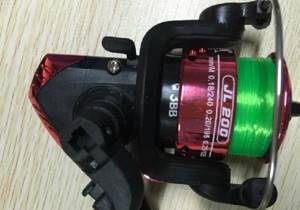
Spools must have volumes that allow storage and unhindered release of the required volume of cord in a certain diameter. As a rule, the spool is filled with a remaining free volume up to the upper edge of the element of about 3 mm . It is precisely this filling of the volume that guarantees easy-to-execute and at the same time long casts without uncontrolled cord coming off.
The gear ratio synchronizes the number of handle revolutions with the number of spool revolutions. Products with a high gear ratio with one turn of the handle make a five-fold turn of the spool, which increases the speed of winding the line. The traction force is also based on the specific operation of the gear shafts of the product, which, during reeling, allows it to withstand the resistance of struggling fish, preventing the line from spontaneously coming off. The more bearings there are in a product, the more complex and reliable the operation of the mechanism, but at the same time, these improvements significantly make the structure heavier.
Important! For float rods, three bearings are sufficient, which will provide all the criteria for this method of fishing.
Do you need a reel on fly and plug rods?
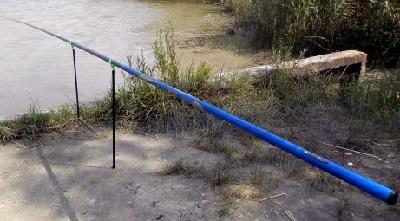
It all depends on the method of fishing. For example, Bolognese and match fishing tackle, without exception, is equipped with a lightweight meat grinder, while at the same time, a plug fishing rod never uses reels in its equipment, no matter what type they are. The very design and technology of fishing in this way excludes the presence of this accessory, because equipment of a certain size is tightly attached to the fishing rod blank, and, if necessary, completely replaced with new, differently configured mounts.
The issue of equipping fly fishing gear with reels remains controversial among anglers. The principle of operation of the tackle also does not require a large storage of fishing line, and installations for such hunting are, as a rule, fixed and do not require radical changes in feeding distances. At the same time, during ambush and wait-and-see fishing, when the rod does not have to be held in your hands, and most of the time it is located on a stand, the presence of reels definitely does not affect the comfort of work. So the choice of equipment for a fly rod may vary from the preferences of the angler based on some of the fishing features. Sometimes in such situations, the fly blank is equipped with an inertia, similar in size to an ice fishing reel.
General information about fishing reels
Every experienced “floater” has in his arsenal several different length fly rods, which are equipped with additional accessories and important elements. But if we talk about beginners who want to go fishing, then if they need to build such equipment on their own, they have a lot of difficulties .
And one of these difficulties lies in the choice of reels, because after visiting a fishing store, where a wide variety of similar products are presented, inexperienced fishermen simply run wild. Dozens of models, many characteristics and unclear words, different price ranges - all this only complicates the upcoming purchase. But if you understand the basic features of fishing reels, this will solve many issues.
It is no secret that the most primitive versions of reels were intended to store a certain supply of fishing line. But over time, they were modernized, modified and became more functional. Modern inventions efficiently cope with many other tasks and have useful functions that are important for making long casts and subsequent fights with large prey.
In addition to external features and material of manufacture (coils can be made from a wide variety of raw materials, including bronze, plastic, ceramics), such products can have different technical characteristics. Among the existing varieties that are available in retail outlets and are widely used by modern fishermen are:
- Inertia-free models (by the way, small inertia-free reels for fly-type fishing rods are considered the most popular, especially for boat fishing).
- Inertial reels for float fishing rods with a gear ratio of 1:1. As a rule, they are used for fly fishing.
- Inertial with a reciprocal number (multiplier). Effective for spinning and trolling fishing.
Bolognese fishing reel
Hunting with Bolognese tackle is a very mobile fishing method, which places special demands on the weight of the equipment set. Regular recasting of bait, reeling out the line to catch fish and change bait, as well as adjustable retrieves keep the angler in constant tension and movement.
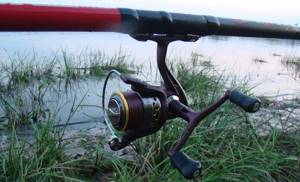
With this fishing technique, heavy tackle quickly tires the fisherman’s hands, forcing him to take frequent breaks and stop casting, therefore, this creates the preconditions for wasting time and reducing the effectiveness of the catch. Based on these considerations, spinning reels for Bolognese fishing rods are chosen with the lightest weight, with bulky plastic spools and the same lightweight body with the presence of a rather rough adjustment clutch, the location of which on the front or rear of the accessory has little effect on the conduct of the fishing process.
Valuable tips for a beginner
When using a spinning reel, many beginners experience various problems. To avoid them, it is enough to follow professional recommendations compiled by more experienced fishermen:
- If for some reason the bait gets caught on an underwater obstacle, turn the rod so that the line is directed to the line roller of the reel through the ring. Then try turning the rod to the line at an angle of 90 degrees.
- When fishing for large prey, there is no need to overload the reel. Instead, you should work with the rod, which will prevent the fish from going under the snag or getting tangled in the line. In addition, this will extend the life of the coil itself.
- If the reel is exposed to rain, do not dry it in the sand, as this can lead to contamination of the mechanism, which will cause it to work much worse.
- Close the line guide bow with your hand while rotating the spinning reel handle in one direction.
Match fishing and reel selection
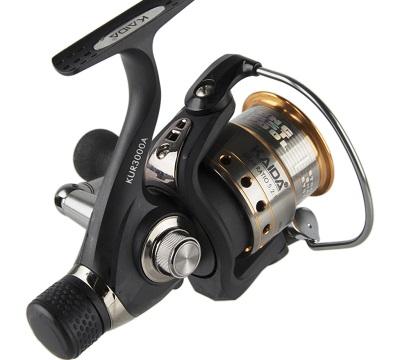
Match reels even visually differ from other types of mechanisms by the presence of a forked handle at the end, which allows the floater to reel in the tackle much faster. For the match, products are made with a high gear ratio of the mechanism, and such accessories also have spool design features. These features include low profile. The low side of the part allows you to wind a small amount of thin monofilament onto the spool without the use of substrates for the base or so-called backing among anglers. And even when casting, the low profile gives the advantage of unhindered escape of thin lines when feeding light rigs. It is these design improvements to the mechanism that provide the prerequisites for high-quality float fishing at long distances with match fishing rods.
Bologna rod
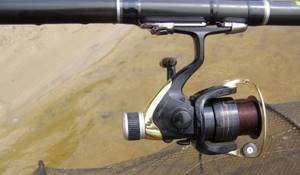
This is the simplest, one might say basic and primitive, float tackle, consisting of a telescopic rod with rings and a very simple small reel, the purpose of which is to store the line and the ability to regulate its release when fishing, depending on the equipment used and the fishing location. Narrowly directed reels for Bolognese fishing rods are not produced, since this, in fact, does not make sense. Usually they use a small inertial one with a drum diameter of 3–7 cm. It does not have a friction brake, but it is as light, simple and cheap as possible.
How to choose a reliable fishing reel
Despite the relatively low requirements for the performance characteristics of the mechanism, when purchasing a fishing accessory, you need to pay attention to some structural features of the product, which, in cases of defect or poor quality, can radically interfere with the productive fishing process and deform the rest of the equipment.
Sellers of fishing equipment are guilty of supplying our market with low-quality, mostly Chinese, goods that do not even meet the low standards for the mechanism required in float fishing. When choosing a product, visually inspect the housings of the mechanisms for the absence of cracks and gaps between the connecting parts and their elements. The presence of play in connections and looseness in the clamping of fastening screws indicates low quality of the product.
When choosing, pay special attention to the spool and reel drum. The surfaces of these elements must be smooth, without abrasions, roughness or nicks. The edges are checked for cracks and burrs. The presence of these defects, even in small quantities, will definitely deform the fishing line and prevent comfortable casting of the equipment. The handle of the mechanism in a working product rotates evenly without slipping, braking or various kinds of extraneous sounds. Don't forget to check the friction brake. To do this, you will need to throw a piece of fishing line onto the spool and adjust the brake, followed by tensioning the cord.
Important! With excessive pulling force, the clutches should smoothly release the cord from the rotating spool with a characteristic crackling sound.
Finally, the reliability of the threaded connection is checked, which is important for types of spinning-free fishing reels, drive shaft and spool. The nut should fit tightly on the thread, and when assembled, the spool should have no play relative to the mechanism body and no free play when the line handler is closed.
Basic guidelines for purchasing a spinning reel
The volume of the spool for the reel. Volumes vary from one thousand to four thousand and above. This indicator indicates how many meters of fishing line you have at your disposal. For example, a two thousand spool holds one hundred meters of 0.2 millimeter fishing line. It is also the most optimal for many fishermen.
Winding onto the spool in a spinning reel is carried out in three ways - a straight cone, a cylindrical method and a reverse cone. Regardless of the winding method, make sure that the fishing line is wound onto the parts evenly, not wavy or intersecting. Otherwise, you risk tangling the line and losing your prey. The use of an endless screw does not affect this quality. Many companies have abandoned its use when twisting fishing line in a reel.
When purchasing, check the performance of the future purchase. The coil should not make any noise, crackling or vibration. Of course, you will have to lubricate the device in the future, but the seller’s belief about the new model that “Lubricate it and everything will go away” should alert you.
The spool bracket for holding the fishing line must be well fixed. Do some experiments. Imagine you're casting, opening the brace, and see what happens next. If the bracket remains in the position in which you left it, then it is secure. Only your forceful movements should open and close the bracket.
Try to choose a device from various foreign companies that have managed to make a name for themselves. Otherwise, when purchasing from a Chinese manufacturer, you run the risk of parting with money again. Spare parts may not be secured or made from cheap materials. And well-known brands are ready to provide you with ultralight reel products at affordable prices. The presence of what is advertised by some is just marketing, nothing more.
Find out which spare part is on the line guide spring. It is not recommended to purchase a device with a pin-type spring. Otherwise, you will have to use spare ones, which are sold separately. With an endless screw this problem can get worse.
And last but not least. You should not purchase a device without your own spinning rod. It is necessary to try it directly on all the fasteners so that the inertialess reel sits in place.
And naturally, the weight of the reel is important. The lighter it is, the fewer problems there are in handling it. If lightweight alloys were used in the production of the reel, it will definitely cost more, but the quality will also be higher.
Popular models
A fishing reel will last a long time if the purchase is made from a well-known and time-tested manufacturer. In addition, when purchasing this accessory, original products have a warranty period, which the seller will remind the buyer about during the sale and in the event of a breakdown, which happens quite rarely with branded products, he will organize a replacement or free repair of the failed part.
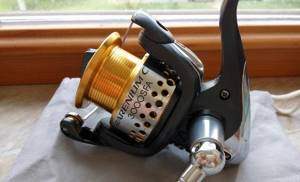
Shimano Rarenium 3000
Giving recommendations for the selection of mechanisms, we will introduce the most famous global companies in this field, which primarily includes Shimano. The brand presents an extensive line of inertial and spinning reels for various types of fishing gear.
- For example, the match Shimano Rarenium 3000 , although a relatively expensive fishing reel, but its service life of ten years will recoup all the initial financial costs spent on it.
- The equally well-known global brand Mikado is not inferior to the previous company in terms of quality and width of the line of all kinds of fishing reels. The ACE MATCH 4006 FD model is popular for float hunting .
- Floaters are also popular with accessories from Japanese Daiwa. The products of this company are distinguished by budget prices and excellent product quality. Particularly worth paying attention to is the Daiwa DF Cat 100 . Easy to maintain and operate, the accessory will last through intense float fishing seasons, even without annual technical events.
The reel models of the companies presented above can be a good example for selecting products from other lesser-known manufacturers, but practical experience in using this high-quality product will allow the angler to feel not only the comfort of fishing, but also gain confidence in his own abilities.
The best spinning reels
RYOBI Excia MX 3000
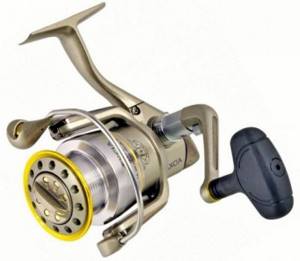
An inertia-free model that has become a classic, which experienced fishermen willingly use themselves and recommend to beginners. All the main parts of the reel: the rotor, the spool and the body itself are made of metal (aluminum alloy). The style is strict, laconic - classic in its best traditions, without unnecessary bells and whistles. The reel is equipped with eight high-quality ball bearings, reducing the load on the main mechanisms and ensuring smooth operation. Thanks to the endless screw, even thin cords can be laid perfectly. The line guide has an anodized titanium nitride coating.
Characteristics:
- main parts are made of durable and lightweight aluminum alloy;
- size - 3000;
- folding handle;
- instant anti-reverse;
- endless screw;
- 8 ball bearings;
- anodized coating for line guide.
Advantages:
- most of the parts are metal;
- light weight (290 grams);
- no backlash;
- smooth ride;
- durability. The model is practically “indestructible”;
- versatility. Can be used for float and spinning fishing.
Cons: none found.
DAIWA Ninja LT 2500
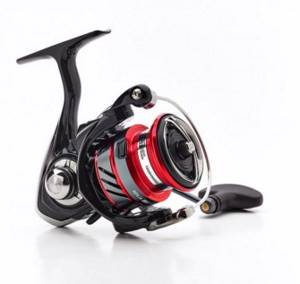
This inertia-free model is a new product from the catalog of the famous DAIWA brand, combining a high level of quality and made in accordance with international standards. The innovative LT Light & Tough technology makes the model reliable and lightweight at the same time. At the same time, the price of the product is absolutely affordable. The automated clutch and lightweight rotor allow you to hook and catch even a large trophy without much effort. Reels of this brand are designed for fishing in fresh waters.
Characteristics:
- size - 2500;
- weight - 240 g;
- front brake;
- reverse stopper.
Advantages:
- aluminum alloy spool;
- automated brake;
- lightness.
No cons found.
SHIMANO SIENNA FE 2500
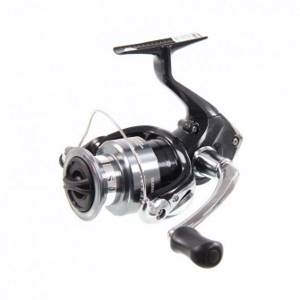
The spinning reel embodies the most advanced modern technologies, thanks to which the result is a truly high-quality device. It is equipped with 2 ball bearings and one roller bearing, which provide exceptionally soft and smooth running. The Varispeed line laying system together with the front friction brake ensures flawless line winding. There is a reverse blocking system.
Characteristics:
- case material - composite;
- size - 2500;
- weight - 270 g;
- official warranty - 0.5 years.
Pros:
- good build quality;
- small weight;
- smooth ride.
Cons: high price.
Feeder Concept Pilot 7 5000FD
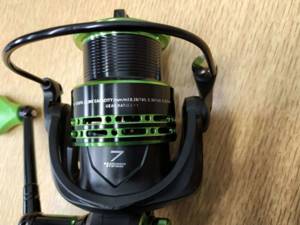
New for 2021, designed for bottom fishing using medium class rods. The small spool is spacious enough for long-distance fishing and does not require additional winding. The kit includes a spare spool that allows you to experiment with line diameter. For example, to fish for large carp in a still body of water, you can use a thicker cord, and in the current, on the contrary, reduce the thickness of the fishing line. The handle is screwed into the drive gear, which helps minimize backlash.
Model features:
- bearings: ball - 6, roller - 1;
- spool material - aluminum;
- anti-reverse;
- additional spool included.
Reviews about this model are positive. The only criticism is that the actual weight is slightly larger than that declared by the manufacturer (317 g), but this is not critical.
VOLZHANKA Optima 4000
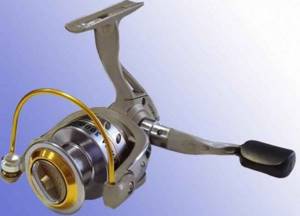
VOLZHANKA Optima is an inexpensive but high-quality reel with a stylish modern design, equally popular among beginners and professional fishermen. The model features a reliable yet small-sized mechanism with six ball bearings. “Volzhanka” has proven itself well in various fishing methods.
Characteristics:
- size - 4000;
- titanium nitride coated line guide;
- system that prevents cord twisting;
- computer balancing;
- reverse lock.
Advantages:
- impact-resistant part of the spool;
- reverse lock;
- reliability, durability;
- low cost. In our rating, this option is one of the cheapest.
Minuses:
- sometimes a sound effect occurs when reeling in the fishing line;
- The downside of popularity is the large number of fakes on the market.
Review of the Volzhanka model - video:
KOSADAKA Defender V7 4000
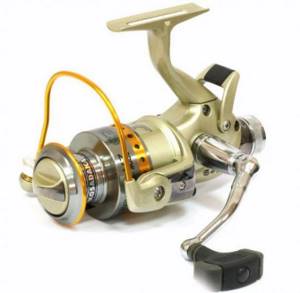
The modification with a baitrunner is specialized gear from Japanese manufacturers, perfect for catching carp and feeder fishing. The peculiarity of these fish is that, having found food, they swim some distance to swallow it. The baitrunner system allows the carp to freely, without visible resistance, remove the line from the spool in order to swallow the bait. In addition, this system allows you to use bite alarms. The device is equipped with an instant reverse stop. The spool and line roller are coated with titanium nitride. You can use braided fishing lines without fear of damaging these parts. Thanks to computer balancing of the rotor, the line on the spool is distributed evenly. Now it is possible to cast bait over fairly long distances.
Characteristics:
- size 4000;
- manufacturing materials: body - high-strength plastic, spool - aluminum;
- bearings: ball - 6 pcs., roller - 1 pc.;
- spool capacity - 0.3 mm/180 m;
- removable handle;
- Included is an additional spool.
Advantages:
- assembly without backlash;
- smooth ride.
Cons: none.
Okuma CEYMAR XT CXT-25
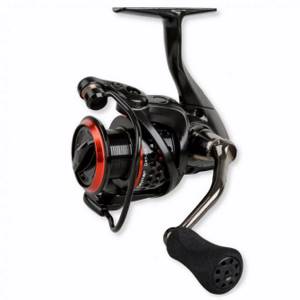
This option is for those who want to buy a good spinning reel inexpensively. An updated model from a well-known Chinese company with a front clutch. The product is made of high-modulus carbon fiber with plastic and metal inserts. This modification is intended for light spinning rods. A large number of bearings (7+1) ensures perfectly smooth running. A nice bonus is the spare spool included, made of aluminum.
Model features:
- clutches with oiled felt discs;
- brass gears;
- durable graphite body;
- comfortable durable aluminum handle;
- RES II - computer rotor balancing.
Advantages:
- acceptable price;
- silent running;
- perfect cord winding;
- 2 spools included: made of aluminum.
MIKADO Crystal Line 3006 FD
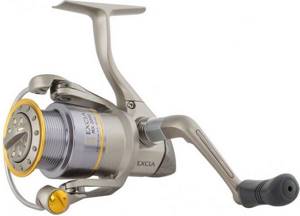
A popular, inertia-free model from the classic Mikado collection, time-tested, with the best quality-to-price ratio. Carbon body. In the manufacture of the reel, Japanese bearings with an increased anti-corrosion effect are used. Reinforced adjustable handles help minimize backlash. The side of the main spool is coated with a protective layer of titanium nitride. An additional graphite spool is included in the kit. Crystal Line 3006 FD products from Mikado are universal and suitable for catching all types of freshwater fish.
Main characteristics:
- size - 3000;
- body - graphite;
- spools: main - aluminum, additional - graphite;
- bearings: ball - 5 pcs., roller - 1;
- weight - 293 g.
Advantages:
- perfect balance, no backlash;
- reasonable cost;
- smooth, without bumps, line laying.
Minus: not very beautiful design (for those who value functionality above all, this is not critical).
Lucky John Maiko 5.5

Multiplier reel designed for vertical fishing in winter. It is possible to catch fish using just one reel. The spools are made open, which allows you to observe the winding of the fishing line. There is no line laying machine. The installation principle of this reel is the same as the spinning reel: below the fishing rod handle, under the left hand (it can be adjusted for the right hand). A special feature of the reel is its elongated leg, which simplifies the reeling process. The product is equipped with 5 bearings (4 ball, 1 roller), mechanical ratchet. Weight 152 g. Warranty period from the manufacturer - 1 year.
Salmo Sniper SPIN 5 10FD
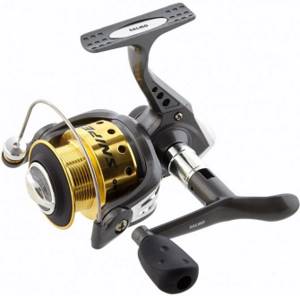
A universal spinning reel (for the left hand) with functions that are characteristic of more expensive analogues. Brake type: front. The reel is equipped with five bearings (4 ball, 1 roller). There is anti-reverse. The drive mechanism is made of brass and aluminum, the rotor and housing are made of plastic and graphite. The spool material is aluminum. The line roller is coated with titanium nitride. The handle is fixed with a screw, both right- and left-hand installation is possible. Weight 240 g, timber capacity - 0.18 mm/235 m.
Coil selection - video:
How to equip a fishing rod with a reel
A fishing rod and reel should feel like a harmonious and balanced fishing tool to the angler. For mounting on gear, all types of mechanisms have a special bracket, the so-called mounting leg, the dimensions of which must correspond to the clamping grooves on the butt of the rod.
Immediately before installation, the grooves are moved apart using a threaded worm gear and the accessory bracket is inserted into them. The bracket must fit into the grooves without interference or obvious play. After installation, the grooves are brought together, applying adequate force to tighten the clamping mechanism. The installed accessory is checked for play. If they are present, the connection is pressed. Having installed the reel, proceed to installing the fishing line. To do this, it is pulled through the passage rings of the tackle and, using a self-tightening loop, and with the line handler open, it is tied at the base of the spool. The next operation is winding the fishing line.
Important! It is carried out with tension on the cord, which ensures tight application of dense rings to the base of the spool and relative to each other.
The tension of the cord is done by hand or by pushing the winding line through the pages of a heavy book. The handle of the mechanism is turned slowly, stopping the process to visually control the laying of the turns, which should not overlap each other.
Read more about the technique of winding fishing line on a spinning reel and other types.
Characteristics of inertia-free models
And although the above reel options have many advantages and distinctive properties, inertialess models have practically no analogues and have long occupied a leading position in the market. The spinning reel (hereinafter referred to as BC) is widely used for various areas of modern fishing, being considered the most common and universal development. Some people in English-speaking countries call it a “fixed spool reel”, due to the design features in which the spool remains stationary.
When casting, retrieving and further working with tackle, the spool remains limited from rotation and maintains its working position. Winding of the fishing line onto the spool is carried out using a line guide, which rotates around the spool in one plane. The translational movements of the mechanism, which moves back and forth, ensure uniform winding of the fishing line along the entire length of the drum. The design of the inertia-free reel consists of:
- Friction brake handles.
- Line roller.
- Line guide brackets.
- Spools.
- Rotor.
- Cases.
- Reverse stopper.
- Handles.
A special element is used as a line guide, which is fixed on the reel rotor through a folding mechanism and consists of a metal bracket and a special roller. The role of the latter is to uniformly wind the fishing line onto the spool.
The reel rotor and line guide are driven by turns of the handle with a certain gear ratio. As a result, the fishing line stretched through the guide roller is wound onto the spool in a back-and-forth motion.
The presence of such mechanisms made the spinning reel more convenient and functional than its predecessor, the multiplier. The BC does not have such disadvantages as the moment of inertia, which is formed during the rotational movements of the drum and increases the frequency of tangling of the fishing line and the formation of “beards”. To implement this design, we had to rotate the multiplier spool 90 degrees, and also work on changing the features of the drive.
Fishing rod reels for winter fishing
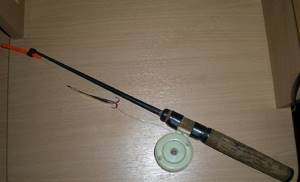
When considering the selection of a reel for winter fishing, they focus on the use of inertial modifications. The best reels have a small drum diameter, made of dense plastic or extruded polystyrene foam. The design of the product should be as simple as possible, and this is a shaft with a drum mounted on it through a sleeve and a spring stopper. It is advisable that moisture does not get on the shaft of the structure. Otherwise, the drum will constantly freeze to the shaft, preventing the free winding of the line from the drum.
Important! After fishing, the product must be thoroughly dried.
Inertia-free fishing rods are suitable for winter fishing, provided that measures are taken to prevent the lines from freezing, which is carried out by lubricating the lines with silicone compounds. These types of products position themselves as elements for hunting using winter spinning rods.
Inertia-free coil device
Absolutely every product produced by foreign or Russian brands consists of the following parts:
- The body to which the drive mechanism and the attachment tab to the fishing rod are attached. In most cases, the body is made of metal or a polymer alloy. The main mechanism through which the coil operates is located inside the housing.
- Rotor with folding handle. The mechanism activates the rotational movements of the rotor with the line-laying arm. When picking up the braid, the bow folds back and allows the fishing line to move freely from a stationary spool. During pulling, the braid is wound onto the spool using a special roller fixed to the bow.
- Fixed spool. Designed for storing braid in a reel. This product is also usually made of metal or polymers.
- A handle that activates the operation of all mechanisms during rotation.
Some reel models (usually those with a higher price) may be equipped with additional equipment. But, as practice shows, all these “bells and whistles” are completely useless in the fishing process; the only benefit from them is ease of use.

